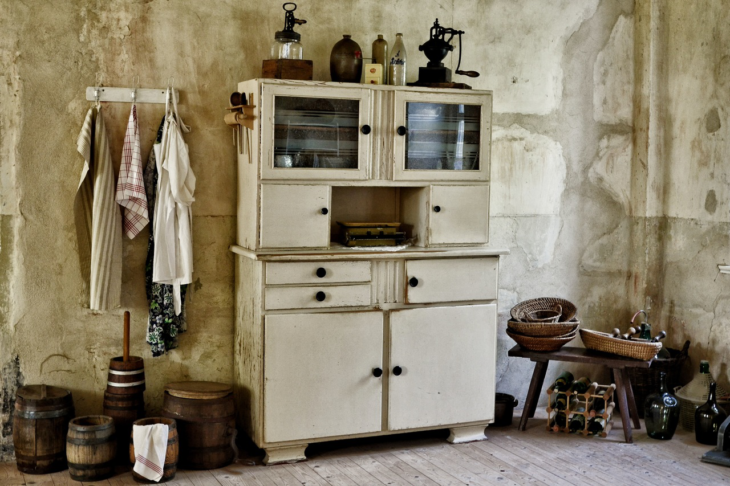It’s only natural for us to grow attached to our belongings. We work tirelessly to earn money and improve our homes and so we should value the items we purchased.
For some people though, it goes beyond simply valuing their possessions. What was once just an earnest desire not to lose anything of value has turned into an obsession with holding on to absolutely everything and never discarding any type of item regardless of how worthless or useless it may have become.
At first, hoarding may seem like a manageable issue, but if it’s allowed to fester, it can turn into something that takes over a person’s life.
People with hoarding issues need help. If you know someone dealing with a potential hoarding problem, please make use of the decluttering guidelines included below to help them out.
Contents
1. Find Out What Kind of Hoarding Issue Needs to Be Addressed
This may come as a bit of a surprise, but hoarding is actually quite a rare condition. Only around five percent of the world’s population have been diagnosed to show clinical hoarding behavior.
You absolutely need to reach out to a therapist if someone in your family is dealing with a hoarding disorder and you would like to help them. In all likelihood, just trying to help them on your own could do more harm than good.
On the flipside, the rarity of the disorder means that many of the people who struggle with throwing objects away are likely just exhibiting hoarding tendencies. You can still consult with a therapist to see if those tendencies could lead to something more significant down the line.
In the meantime, you can also start to do other things to address the hoarding issue.

2. Avoid Throwing Everything Away
Helping out a hoarder or even just someone with hoarder tendencies does not necessarily mean getting rid of everything they own.
Doing so only risks alienating the person you are trying to help. Instead of the hoarder becoming receptive to the help you are offering, he/she may be hesitant to proceed any further knowing you do not care that much about what kind of emotional toll the cleaning is having on him/her.
Remember that your goal early on is to win over the trust of the person you want to help.
Accomplishing that will be easier if you don’t go in with the mindset of clearing house right away and asking questions later.

3. Go through the Different Storage Areas in the Home
“If you’re dealing with a full-blown hoarder, then you can expect to find all kinds of objects scattered all over the home. As big as the messes may be in the living room and bed rooms, they may still not account for everything you need to clean up.” says K Kuchiya the founder and editor of CleanUpHome.
To make sure that you get to everything that needs to be cleaned up, check every storage area present in the home.
Inspect the kitchen pantry, the refrigerator, and the freezer and see if there are any containers there that should have been disposed of long ago.
Make sure to look through the cupboards and cabinets as well because there are likely items that have been stored there that have been forgotten about.
This is going to be a time-consuming endeavor, but it’s one you need to take on if you want to help out a hoarder.

4. Ask How They Want Specific Objects to Be Handled
You have to understand that to a hoarder, all of the things they have in their home possess some semblance of value.
That may seem odd when all you’re seeing is a mound of junk, but you have to realize that hoarders have developed connections to their possessions and that’s part of the reason why it’s so difficult for them to get rid of all that stuff in the first place.
Consult with the person you are trying to help. Ask him/her if the object you are considering discarding is something that holds great sentimental value, and if so, ask why that is the case. You also need to avoid dismissing what they say.
If they say that something is valuable but you honestly believe that it isn’t, talk the matter out with them and try to get their permission to move forward with what you want to do.

5. Get Rid or Donate Items That Are No Longer Needed
After thoroughly checking all the items included in the hoarder’s home, you can now move on to the process of actually removing some of them.
It’s important to prioritize only the items that have been deemed to possess no real value. You do not want to get rid of something only to find out later that the person you were assisting actually wanted to hold on to that.
Items long past their expiration date need to be disposed of, but you don’t necessarily have to throw everything away.
You can also choose to gather all the still useful items to be removed from the home in different containers and then donate them to charity. Doing so may even make it easier to convince the hoarder to part ways with their possessions because they know that those items will be going to be people who can use them more.

6. Organize the Remaining Belongings
Now that the hoarder’s home has been cleared of all the unnecessary items, it is now time to start the process of rehabilitating the home itself.
The best way to do this is to simply get everything organized.
If necessary, purchase additional shelves and containers to hold all the items that have been kept. That way, they won’t have to be thrown into a gigantic pile anymore.
Those additional shelves and containers will help immensely in terms of getting the home better organized.
It’s also a smart move to label all the containers that you’ll be using to store the items. The labels will help people understand right away where certain items are being kept and if there’s a need to retrieve something specific, they can just refer to those.
Taking the time to organize the home will significantly improve how it looks and also create a more comfortable living space for the hoarder.
Helping a hoarder or even just someone with hoarder tendencies reclaim his/her life is not easy. There are so many obstacles that can get in the way and they can make failure a possible outcome.
However, if you truly dedicate yourself to the cause of helping a hoarder out, it is possible to change their situation for the better.
The decluttering guidelines listed above will most certainly help a hoarder get back on track and from there, staying organized long-term will be a more realistic goal.
